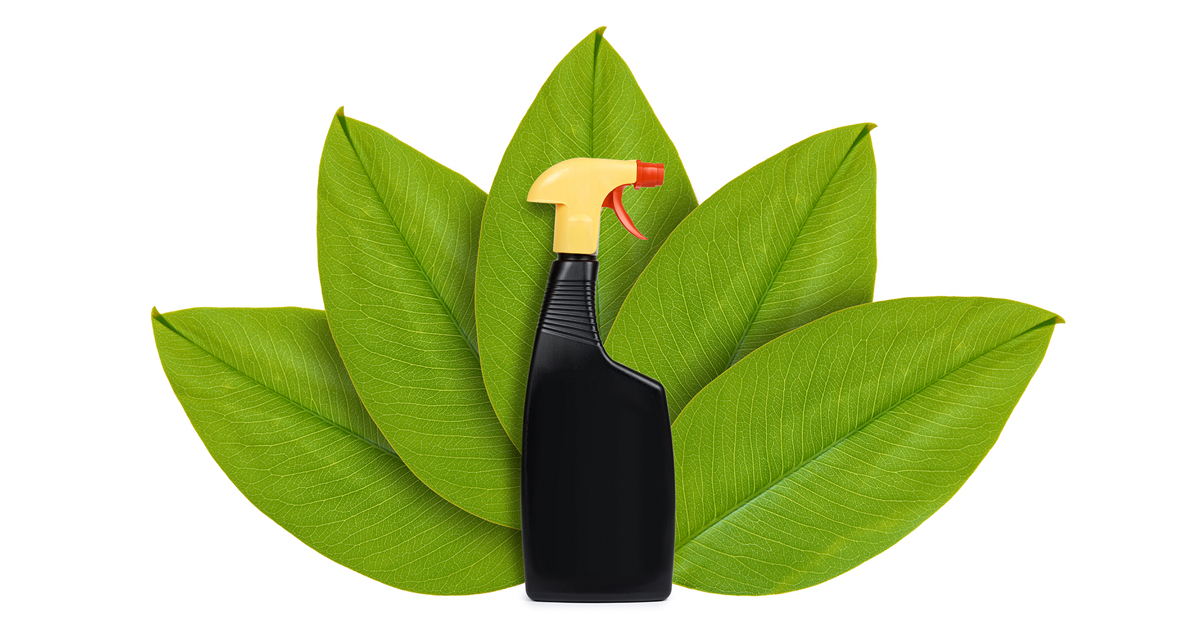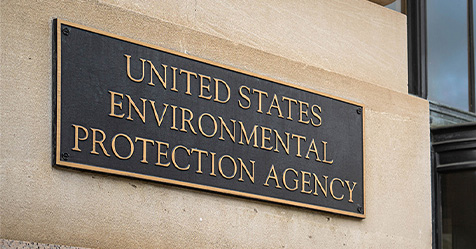Cold and flu season will peak soon. For schools, hospitals, and other facilities that see heavy traffic and potentially sick people, robust cleaning and sanitation protocols are essential to maintain the health and safety of inhabitants.
Selecting effective cleaning and disinfecting agents can make a big difference in stopping the spread of infectious diseases. But choosing which cleaning products to use can be difficult. Although most synthetic, chemical-based disinfectants are effective against pathogens that cause illnesses, they also have the potential to be hazardous to people’s health and are often not environmentally sustainable. As bacteria and viruses adapt to chemicals when they encounter the same formulations repeatedly, the use of synthetic products can lead to antimicrobial resistance.
Workers responsible for applying synthetic products must take special precautions, such as wearing personal protective equipment (PPE). Further, people with certain immune system disorders and other health issues can be particularly sensitive to these chemicals, which can lead to adverse events and negative reactions.
Botanical vs. authentically botanical
Today, alternatives are available in the form of authentically botanical disinfectants, which provide comparable effectiveness to synthetic products but don’t come with the same caveats described above. Natural essential oils that have been used for thousands of years for their antimicrobial properties replace harsh chemical ingredients.
Due to their ultra-low level of volatile organic compounds (VOCs), authentically botanical disinfectants are ideal for use around at-risk populations and are safe for skin and eyes, eliminating the need for PPE during application. Instead of chemicals, pure essential oil ingredients provide optimal effectiveness against germs.
However, not all botanical disinfectants are created equal. Some make misleading claims or have compromised efficacy. To select the most effective and authentically botanical disinfecting solutions, you need to understand the difference between botanical and bio-based disinfectants. It’s helpful to start by examining the differences between old organic carbon and new organic carbon:
- Old organic carbon comes from the remains of organisms, such as animals, that have decomposed over millions of years and have been exposed to forces of heat and pressure. Petroleum and coal are examples of old organic carbon that we take from the earth and use as fossil fuels. These resources are not renewable.
- New organic carbon comes from live plants and trees that are harvested for various uses. New organic carbon is considered renewable in that it can be used repeatedly and does not run out because it is naturally replaced by planting new plants and trees.
The term “bio-based” often refers to how much new organic content is contained in a product compared to how much old organic content is used. When it comes to cleaners and disinfectants, a product marketed as botanical might contain as little as 15% bio-based content while the remainder of the content is sourced from petroleum-based synthetic botanicals. This means that those “botanical” disinfectants and cleaners will not provide the same level of gentleness on surfaces and benefits to the built environment as those containing 100% bio-based content. Authentically botanical means that the product is derived from all bio-based content.
When in doubt, refer to the U.S. Department of Agriculture (USDA), which tests the ratio of available products as part of its BioPreferred® Program.
Ensuring efficacy
One of the most common active ingredients in authentically botanical disinfectants is thymol, an essential oil derived from thyme, oregano, or ajwain. These plants are highly renewable, making them ideal for botanical-based products.
Thymol has naturally strong antibacterial properties and has been used for centuries as incense to purify air, as a natural pesticide, and as an antiseptic to heal skin infections. Today, thymol is the basis for disinfectant cleaners, offering a sustainable way to protect people from germs without the risk to their health or to the environment.
When sourcing authentically botanical products, here are a few ways to discern which “botanical” cleaners are authentic and which contain harsher ingredients:
- Look at the effectiveness. The disinfectant should show 99.9% efficacy against viruses and bacteria.
- Watch for the warning signs. Ready-to-use authentically botanical cleaners with 100% bio-based content will not include special symbols or warnings on the label, such as flammability or the need for PPE during application. If there are warning signs on the bottle, chances are it is not truly botanical.
- Reference the USDA website. The USDA BioPreferred program rigorously tests disinfectants to determine the percentage of bio-based content used. Visit gov/BioPreferred to ensure you are choosing safe and effective products—for both people and the environment.
- Ensure EPA registration. At minimum, professionals should seek out disinfectants that are registered by the Environmental Protection Agency (EPA). EPA-registered products must include hospital disinfectant efficacy as well as general fungicide efficacy.
- Read the product label. A product label that warns against mixing with oxidizing agents is a clear sign that the product is not authentically botanical. Authentic botanical formulas are typically nonreactive, even with harsh ingredients.
By following these tips, cleaning and maintenance professionals can identify authentically botanical disinfecting solutions and avoid the risks associated with common, chemical-based options.



